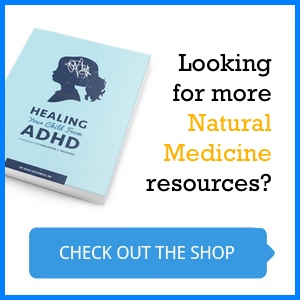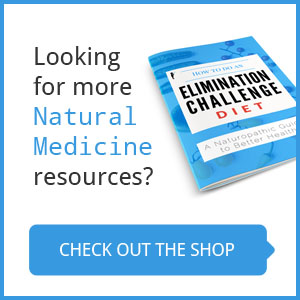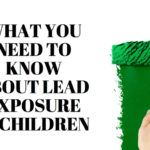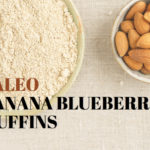
How to find a safe, natural sunscreen for your child
Is sun exposure safe?
While sunlight is wonderful for obtaining Vitamin D, which has many health benefits, the sun also has the potential to cause skin damage. Right now the research is pretty clear that intermittent, intense sun exposure in childhood and adolescence is linked to melanoma. Melanoma is the most dangerous of the 3 types of skin cancers. Occupational or long-term (less intense) exposure to the sun does not appear to be linked to melanoma. Interestingly, melanoma is less likely to develop on chronically sun-exposed areas like the face and hands, and usually appears on the back or legs.
It’s important to prevent sunburns in children, as even a few milder burns can increase the risk of developing skin cancer. Children who have light colored skin, eyes or hair, or who play in the sun for long periods are also at a higher risk.1 Sunlight contains harmful ultraviolet (UV) rays that can cause damage. The two main types that affect humans are ultraviolet A (UVA), which penetrate deeply into skin causing premature skin aging and wrinkles, and ultraviolet B (UVB) are significantly stronger and are responsible for causing sunburn.1
What about sunscreens?
Unfortunately many sunscreens available in North America contain ingredients that could contribute to health concerns. Because sunscreens are applied over large parts of skin, the ingredients are quickly absorbed, and can be found in blood and urine, and even passed into breast milk in breastfeeding moms. Many common ingredients found in sunscreens appear to block or mimic hormones or cause allergic reactions in sensitive skin. For children, this could potentially lead to some serious health concerns.
Almost 75% of products examined by the Environmental Working Group offered inferior sun protection or contained worrisome ingredients like oxybenzone (a hormone disruptor2), or retinyl palmitate (a form of vitamin A that may harm skin3).
When looking for a sunscreen for your child, it’s important that it has the ability to block UVA and UVB rays, with ingredients that pose fewer health concerns.
Mineral based sunscreens containing zinc oxide or titanium dioxide offer good protection against UVA and UBV rays. Don’t worry – they aren’t the old chalky white creams from decades ago. More recent technology uses very tiny particles of the minerals to avoid leaving a chalky white tint on skin. The lists below provide an overview of which ingredients are safe, and which should be avoided.
Safe Mineral Based Ingredients:
- Zinc oxide
- Titanium dioxide
Ingredients to Avoid:
- Oxybenzone – this chemical is absorbed through the skin and reaches the bloodstream where it can act like estrogen in the body. It can also trigger allergic skin reactions.6
- Octinoxate (Octylmethoxycinnamate) – can act like estrogen in the body.6
- Homosalate – can disrupt hormones.6
- Octocrylene – can cause allergic skin reactions.6
- Methylisothiazolinone – this common ingredient is a skin sensitizer and can contribute to allergic skin reactions. It is best to avoid the use of this ingredient.6
- Sunscreens with Vitamin A – it may speed the development of skin concerns when used on the skin in direct sunlight.4 It may appear on labels as vitamin A, retinyl palmitate, retinyl acetate, retinyl linoleate or retinol.
- Added insect repellents.2
- The David Suzuki Foundation recommends avoiding common cosmetic ingredients that can be toxic, including parabens, phthalates, polyethylene glycol (PEG), propylene glycol, phenoxyethanol and sodium laurel sulphate.8
Looking for Product Guidance?
For a list of the Environmental Working Group’s Best Scoring Kid’s Sunscreens of 2017, visit: http://www.ewg.org/sunscreen/best-kids-sunscreens/
For a list of the Environmental Working Groups’ Worst Scoring Kid’s Sunscreens of 2017, visit: http://www.ewg.org/sunscreen/worst-kids-sunscreens/
Sun Safety Tips
Despite using safer sunscreens, it’s important to follow the tips below to keep your child safe in the sun.
- Bigger isn’t better. Higher SPF rating sunscreens can be misleading, and they don’t necessarily offer greater protection from UV-related skin damage3. This is very important! High SPF sunscreens may block UVB rays (which prevent sunburn), but actually allow more UVA rays which are more closely linked to melanoma. Kids could end up over-exposed to dangerous UVA rays because their skin isn’t showing signs of damage (they are not getting burned). For more information about UVA vs UVB rays and high SPF sunscreens see the Environmental Working Group article What’s Wrong With High SPF?
- Look for water-resistant sunscreens that offer SPF protection between 15 and 50.
- Avoid sunscreen sprays. They may be convenient, but they also pose a risk of exposing your child’s lungs to potentially toxic chemicals. They also may not effectively coat the skin to offer the same protection as cream based formulas. Currently the FDA is investigating the safety of sunscreen sprays.
- Apply a generous coating of sunscreen (about one ounce), and reapply it every two hours, and after swimming. For the best protection, apply 30 minutes before sun exposure. Remember to apply generously to ears, nose, and the tops of hands and feet.
- Balm those lips! SPF 15 or 30 zinc oxide based lip balms should be used to protect lips from burning and peeling.
- Don’t rely on sunscreen alone to protect from burns. Put a lid on it! Encourage your child to wear wide-brimmed hats that provide shade for the face, ears and back of the neck.
- Consider sun protective clothing. There are lines of light clothing available that provide SPF protection against UVA and UVB rays that can be worn instead of sunscreen. Most outdoor stores carry these, and even have clothing made to use in the water. Ensure that any skin not covered by clothing is coated in sunscreen.
- Stay safe in the shade! Encourage children to play in the shade, under trees or use umbrellas or pop-up tents to reduce sun exposure.
- Encourage the use of shades. The use of sunglasses that provide 100% UVA and UVB protection should be encouraged in children. Look for wrap around styles that provide the most eye coverage. Let your child pick out their own fun pair, and encourage them to wear them regularly.
- Timing counts! The sun’s rays are the strongest mid-day between 10 and 4pm, so it’s ideal to plan outdoor activities in the early morning or late afternoon whenever possible.
- Check the UV index on your local weather station. The higher the index, the stronger the UV rays will be. When the UV index is high, limit direct sun exposure whenever possible.
- Have babies under 6 months old avoid sun exposure. The American Academy of Pediatrics (AA) recommends that in order to prevent sun burn, infants avoid sun exposure. They should be dressed in lightweight long-sleeved shirts, long pants and brimmed hats that shade the neck. When shade and long clothing isn’t an option, a minimum of SPF 15 sunscreen could be applied to the face and back of the hands.7
References:
1. Canadian Cancer Society (2017). Sun and UV. http://www.cancer.ca/en/prevention-and-screening/live-well/sun-and-uv/?region=on Accessed May 26, 2017.
2. Environmental Working Group. EWG’s guide to safer sunscreens. Ewg.org/sunscreen. Accessed May 26, 2017.
3. Environmental Working Group (2017). EWG’s Sunscreen Guide: Welcome to EWG’s 11th Annual Sunscreen Guide. http://www.ewg.org/sunscreen/report/executive-summary/ Accessed May 26, 2017.
4. Environmental Working Group (2017). 8 little-known facts about sunscreens. http://www.ewg.org/sunscreen/report/8-little-known-facts-about-sunscreens/ Accessed May 26, 2017.
5. Environmental Working Group (2017). EWG’s Worst Scoring Sunscreens for Kids. http://www.ewg.org/sunscreen/worst-kids-sunscreens/ Accessed May 26, 2017.
6. Environmental Working Group (2017). The Trouble with Ingredients in sunscreens. http://www.ewg.org/sunscreen/report/the-trouble-with-sunscreen-chemicals/ Accessed May 26, 2017.
7. American Academy of Pediatrics (2017). Sun and Water Safety Tips. https://www.aap.org/en-us/about-the-aap/aap-press-room/news-features-and-safety-tips/pages/sun-and-water-safety-tips.aspx. Accessed May 26, 2017.
8. David Suzuki Foundation (2010). How to Choose a Safe Sunscreen. http://www.davidsuzuki.org/what-you-can-do/queen-of-green/faqs/toxics/how-to-choose-a-safe-sunscreen/ Accessed May 26, 2017.
9. David Suzuki Foundation (2010). The “Dirty Dozen” Ingredients investigated in the David Suzuki Foundation survey of chemicals in cosmetics. http://www.davidsuzuki.org/issues/downloads/Dirty-dozen-backgrounder.pdf. Accessed May 26, 2017.



